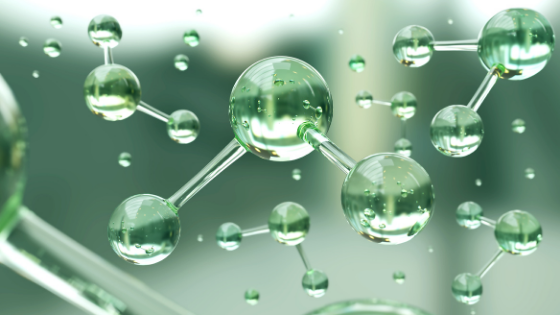
Renewable energy makes sense of hydrogen.
Image: Australian Energy Market Operator (AEMO)
This morning Federal Government Ministers Mathias Cormann and Angus Taylor announced a $300 million Advancing Hydrogen Fund in terms of a panacea:
“From cheaper energy bills and job creation in regional Australia, to playing a role in reducing global emissions both at home and in countries that buy Australian produced hydrogen, the industry’s potential cannot be ignored,” said Energy and Emissions Reduction Minister Taylor in the joint announcement.
The fund is designed to mesh with priorities under the national Hydrogen Strategy and as such will back areas that advance hydrogen production, developing export and domestic supply chains, establishing hydrogen hubs and building domestic demand for hydrogen.
Just a month ago, BloombergNEF released a report, Hydrogen Economy Outlook, which concluded that only a widespread global commitment to net zero emissions could generate the kind of investment — it calculated the need for US$150 billion in cumulative subsidies to 2030 — required to bring down the cost of producing hydrogen and make it competitive with other fuels.
Hydrogen is not a free kick
“Once you set a net zero target, and are serious about putting policies and measures in place to achieve that, then hydrogen becomes a necessary option,” Kobad Bavhnagri, Global Head of Industrial Decarbonisation at BNEF and lead author of the report, told pv magazine at the end of March.
“If you don’t have that clarity and that purpose,” Bhavnagri continued, “then actually there’s no need to do hydrogen and it won’t stand up.” A higher cost, less convenient energy source than fossil fuels such as coal, gas and oil, hydrogen only starts to make sense when the demand is created for a zero-emissions alternative.
Bhavnagri explained that development of hydrogen is a global task. It requires mass participation to achieve the economies of scale that will make hydrogen viable.
Based on fuel prices in March, the Hydrogen Economy Outlook estimated, for example, that if the electrolysers used to produce hydrogen from water (one method of hydrogen production that lends itself to using renewable energy to power the process of atom splitting) could be driven dramatically down in cost by demand and manufacturing efficiencies, renewable hydrogen could be produced for US$0.8 to US$1.6/kg by 2050. This was then equivalent to gas priced at US$6-12/MMBtu, making it competitive with natural gas.
Australia’s Federal Government has set the open-ended goal — dubbed ‘H2 under 2’ — of producing hydrogen for AU$2 a kilogram as part of its as yet unreleased but much anticipated Technology Investment Roadmap.
Its $300 million Advancing Hydrogen Fund is to be administered by the Clean Energy Finance Corporation (CEFC), which this morning welcomed the announcement of its amended mandate to make the $300 million available from its existing funds.
“We are confident we can use our capital to help build investor confidence in the emerging hydrogen sector,” said CEFC CEO, Ian Learmonth.
It’s not easy staying green
This morning’s CEFC statement also emphasised that, “In line with the CEFC Act, projects seeking CEFC finance through the Advancing Hydrogen Fund are required to be commercial, draw on renewable energy, energy efficiency and/or low emissions technologies and contribute to emissions reduction.”
The CEFC says that from the allocated Advancing Hydrogen Fund it anticipates providing either debt or equity finance to eligible larger-scale commercial and industrial projects likely to require $10 million or more in CEFC capital, alongside finance raised from other sources.
CEFC identifies an early priority for funding to coincide with the Australian Renewable Energy Agency (ARENA) $70 million Renewable Hydrogen Deployment Fund.
This ARENA funding round opened on 15 April, and expressions of interest are currently set to close on 26 May. Outcomes are expected to be announced on 30 November this year.
“We see green hydrogen as offering the most credible pathway to decarbonisation for high emitting sectors and those which lack scaleable electrification options,” said CEFC’s Learmonth. CEFC identifies some of these sectors as manufacturing, heavy transport such as trucks and shipping, mining, processing of metals and production of chemicals.
Exports going nowhere: use it on shore
One clear point of departure between BNEF’s Hydrogen Economy Outlook and the stated ambitions of the Government Advancing Hydrogen Fund is in relation to hydrogen as an export industry for Australia.
Cormann describes the Fund as a “catalyst for the future growth of Australia’s hydrogen industry,” which has the potential to become “a major new export industry”. Taylor adds the commitment made in the National Hydrogen Strategy, launched in November last year, “to build Australia’s hydrogen industry into a global export industry by 2030”.
Bhavnagri, on the other hand, found in his BNEF report that, “the economics of exporting hydrogen by ship are very poor”.
He told pv magazine, “This narrative about Australia being able to export hydrogen is a bit misplaced … Hydrogen is not like natural gas; it’s far less dense and has a liquefaction temperature much lower than natural gas, so it’s just much harder to put on a ship in a liquefied state — it’s really expensive to do.”
He concluded that “Australia can be a hydrogen superpower by using it onshore and exporting value-added products.”
Both the Australian Government and BNEF champion the establishment of hydrogen hubs, with BNEF explaining the efficiencies that such developments could offer: hubs might include clusters of wind-and-solar-powered electrolysers, and large storage facilities to smooth and buffer hydrogen supply, served by networks of dedicated pipelines feeding hydrogen to co-located industrial customers.
Renewable resource can make Australia’s hydrogen the cheapest
Writing in BNEF’s Hydrogen Economy Outlook, Bhavnagri notes: “Our analysis suggests that a delivered cost of green hydrogen of around US$2/kg in 2030 and US$1/kg in 2050” is achievable in China, India and Western Europe. Countries with the best renewable and hydrogen storage resources, such as Australia, could achieve 20-25% reductions on these costs.
But BNEF cautions that even at US$1/kg the use of hydrogen in place of fossil fuels is still likely to require a carbon price or other policy measures to make it the most attractive option: “This is because hydrogen must be manufactured, whereas natural gas, coal and oil need only to be extracted, so it is likely to always be a more expensive form of energy.”
Ultimately Bhavnagri is optimistic about the potential for hydrogen to help decarbonise the planet, and to open new opportunities for green manufacturing in Australia that could significantly boost employment opportunities.
Signs of hydrogen life
The Hydrogen Economy Outlook said investors keen to be involved in hydrogen projects should look out for evidence of seven key events that signal opportunity for green hydrogen to scale as needed to provide a viable alternative to fossil fuels, and act as an accelerator to decarbonisation . In order of importance, the first three indications are:
- Legislation of net-zero climate targets
- Harmonisation of international standards governing hydrogen use
- Introduction of targets with investment mechanisms
We now have an investment mechanism, administered by a trusted body which has previously facilitated almost $28 billion worth of clean-energy projects in Australia since its inception in mid-2012, but this investment seems still untethered from Government political will and policy needed to reach net zero emissions within a timeframe that will help global citizens avoid the next looming threat to our lives. Prosperity assumes a healthy planet.
Schedule a call with us to see how Green Hydrogen can help take you further.

This article originally appeared on pv-magazine-usa.com, and has been republished with permission by pv magazine (www.pv-magazine.com and www.pv-magazine-usa.com).








